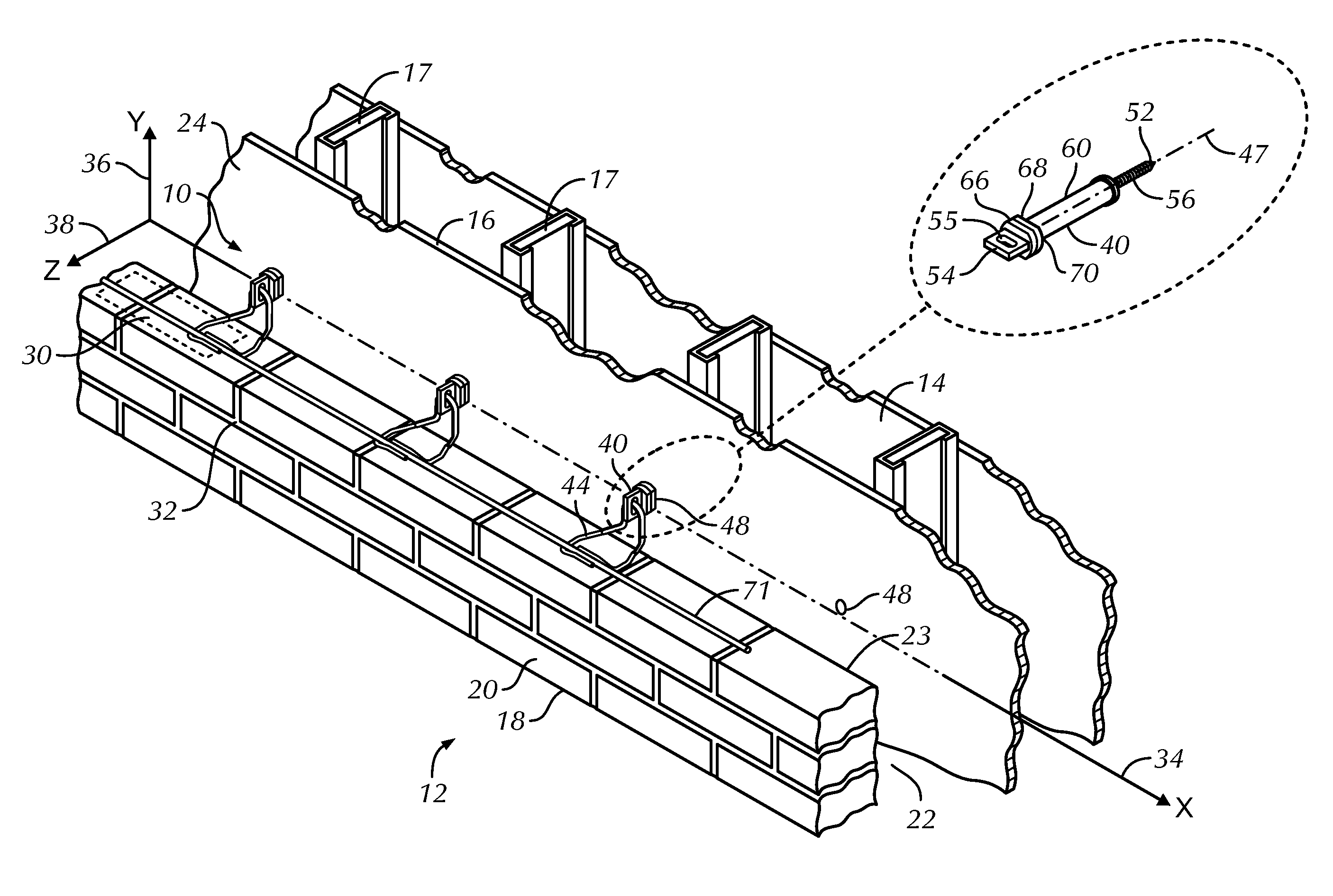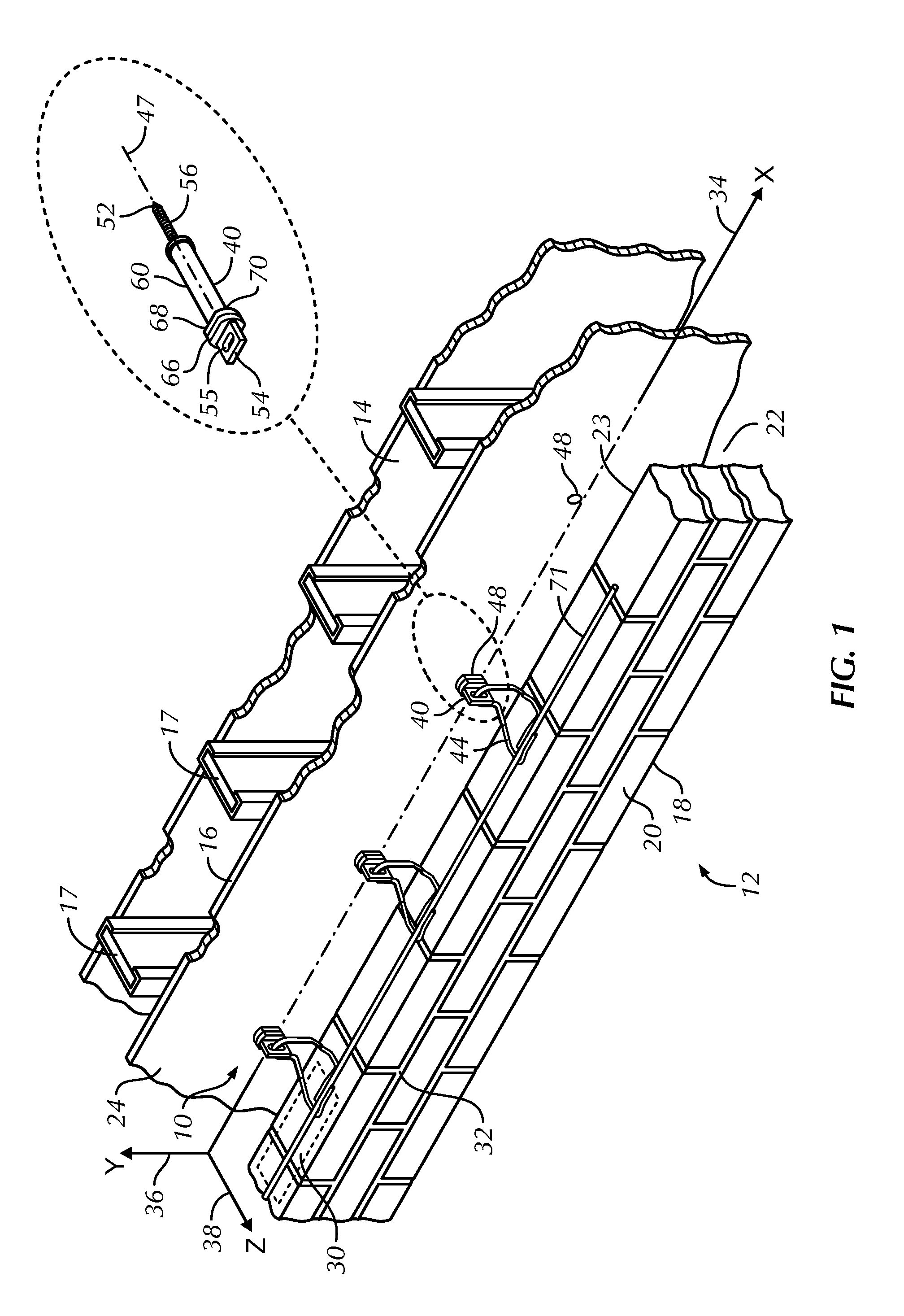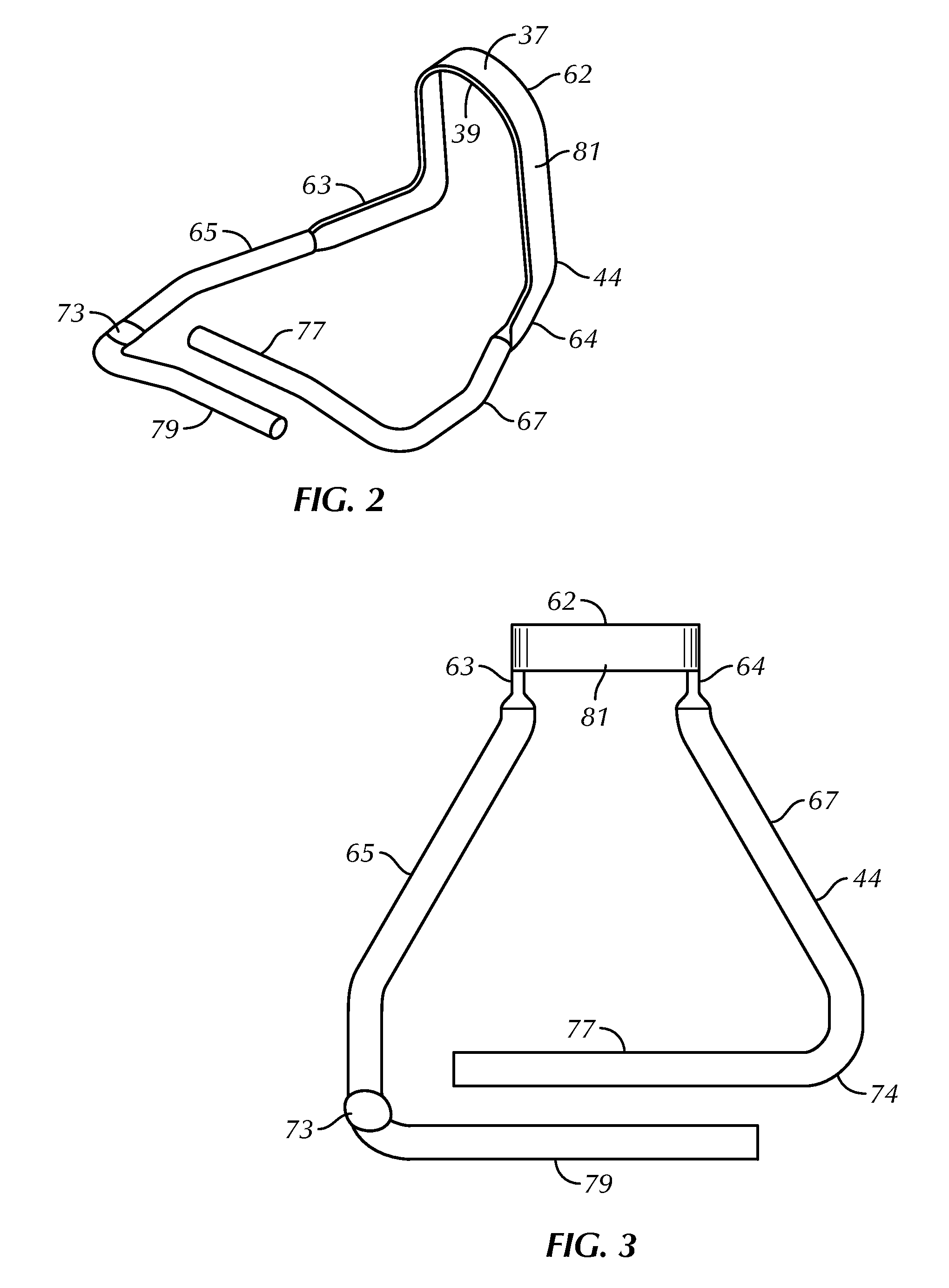High-strength veneer tie and thermally isolated anchoring systems utilizing the same
a veneer tie and anchoring system technology, applied in the direction of shock-proofing, building components, covering/lining, etc., can solve the problems of insufficient insulation integrity of the system, frequent failure of the anchoring system, and hampered installation, so as to increase the strength of the veneer tie
- Summary
- Abstract
- Description
- Claims
- Application Information
AI Technical Summary
Benefits of technology
Problems solved by technology
Method used
Image
Examples
first embodiment
[0076]The description which follows is of three embodiments of anchoring systems utilizing the high-strength ribbon veneer tie devices of this invention, which devices are suitable for nonseismic and seismic cavity wall applications. Although each high-strength veneer tie is adaptable to varied inner wythe structures, the embodiments here apply to cavity walls with insulated masonry inner wythes, and to cavity walls with insulated and uninsulated dry wall (sheetrock) inner wythes. The wall anchor of the first embodiment is adapted from that shown in U.S. Pat. No. 8,037,653 of the inventors hereof.
[0077]In accordance, with the Building Code Requirements for Masonry Structures, ACI 530-05 / ASCE 5-05 / TMS 402-05, Chapter 6, each wythe of the cavity wall structure is designed to resist individually the effects of the loads imposed thereupon. Further, the veneer (outer wythe) is designed and detailed to accommodate differential movement and to distribute all external applied loads through ...
second embodiment
[0094]Referring now to FIGS. 2 through 8 and 13, the anchoring system is shown and is referred to generally by the number 110. A cavity wall structure 112 is shown having an inner wythe or masonry backup 114 with rigid insulation thereon 126 and an outer wythe or veneer 118 of brick 120 construction. Between the inner wythe 114 and the outer wythe 118, a cavity 122 is formed. The outer wythe 118 has a facial plane in the cavity 122.
[0095]Successive bed joints 130 and 132 are substantially planar and horizontally disposed in the outer wythe 118 and, in accord with current building standards, are 0.375-inch (approx.) in height. Selective ones of bed joints 130 and 132, which are formed between courses of bricks 120, are constructed to receive therewithin the insertion portion of the veneer anchor hereof. Being threadedly mounted in the inner wythe, the wall anchor is supported thereby and, as described in greater detail herein below, is configured to minimize air and moisture penetrat...
PUM
 Login to View More
Login to View More Abstract
Description
Claims
Application Information
 Login to View More
Login to View More - R&D
- Intellectual Property
- Life Sciences
- Materials
- Tech Scout
- Unparalleled Data Quality
- Higher Quality Content
- 60% Fewer Hallucinations
Browse by: Latest US Patents, China's latest patents, Technical Efficacy Thesaurus, Application Domain, Technology Topic, Popular Technical Reports.
© 2025 PatSnap. All rights reserved.Legal|Privacy policy|Modern Slavery Act Transparency Statement|Sitemap|About US| Contact US: help@patsnap.com



